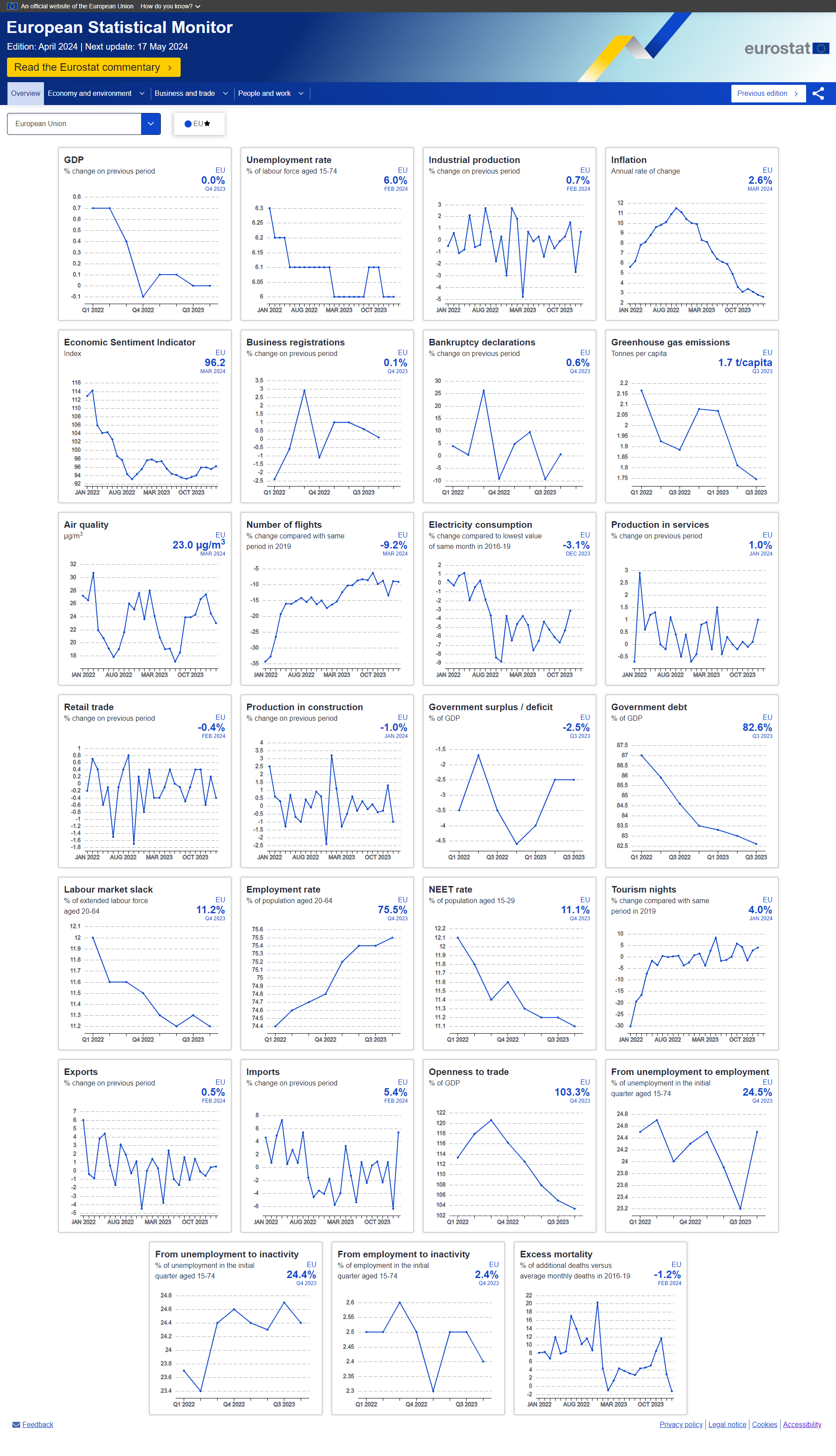European Statistical Monitor: April edition

Today, Eurostat released the European Statistical Monitor, a dashboard with short-term indicators covering different areas, such as economy, environment, business, health and work.
This monthly updated dashboard is designed to track developments within the EU as a whole and its members, as well as the EFTA countries, providing a holistic overview of key developments. It focuses on monthly and quarterly indicators, ensuring up-to-date insights and includes a commentary, focusing on recent changes and trends.
April highlights: EU production in services reaches a new historic high, in a context of falling inflation, while industrial production and economic sentiment lag behind
EU production in services marked a month-on-month increase for the second consecutive month in January 2024, reaching a new historic high. Meanwhile, industrial production increased month-on-month in February 2024, though it only partially reversed the significant decline recorded in the previous month. In contrast, EU retail trade decreased month-on-month in February, reversing gains observed in the previous month.
In February, both industrial production and retail trade remained below their 2021 levels, lagging behind production in services. Despite its recent uptick, EU industrial production continues to show a generally downward trend. By contrast, retail trade exhibits a generally flat trend, even as inflation - which has significantly impacted consumer spending - steadily declines.
In March 2024, EU annual inflation declined further to its lowest level since July 2021, primarily due to falling energy prices.
Against this backdrop, in February 2024, EU unemployment remained at historically low levels. The unemployment rate was unchanged both from the previous month and from February of the preceding year, indicating a sustained period of stability in the labour market.
EU economic sentiment showed signs of improvement in March 2024, reversing the decline observed in the previous month. The rise in March was driven by improved confidence among retailers, consumers and, to a lesser extent, services and industry managers, while confidence remained stable in construction. Despite this positive shift, the European Commission’s Economic Sentiment Indicator still remains below its long-term average.
You can read the full analysis by opening the Eurostat commentary linked in the dashboard’s header.
The European Statistical Monitor is updated every month with the latest available data for each indicator.
For more information
If you have any queries, please visit our contact us page.

